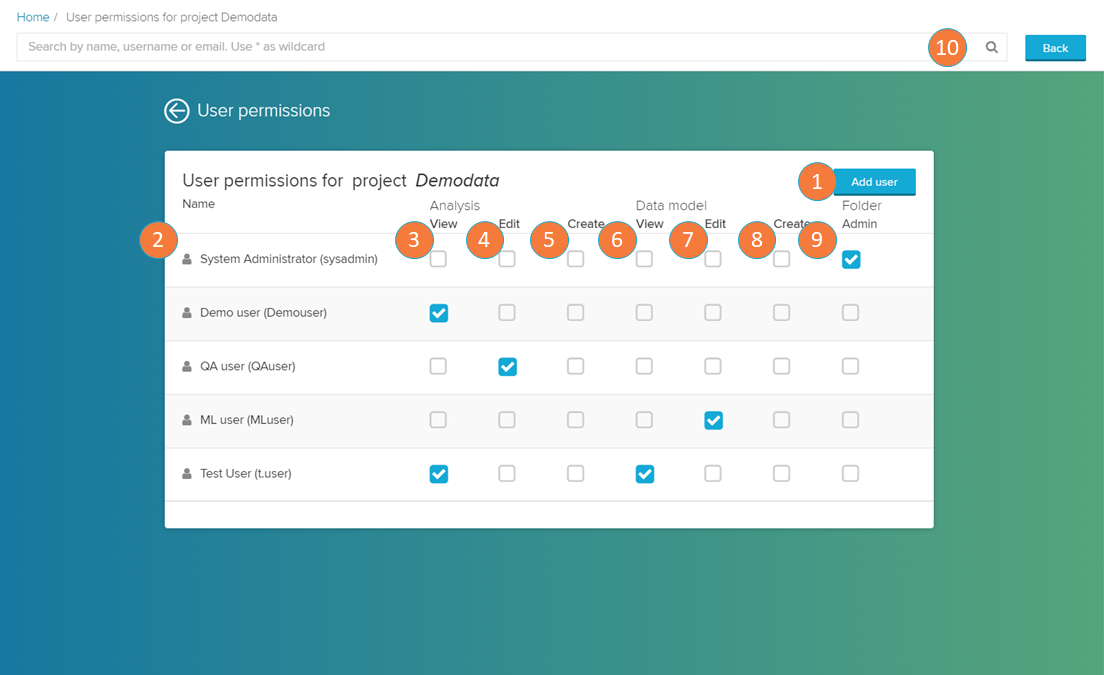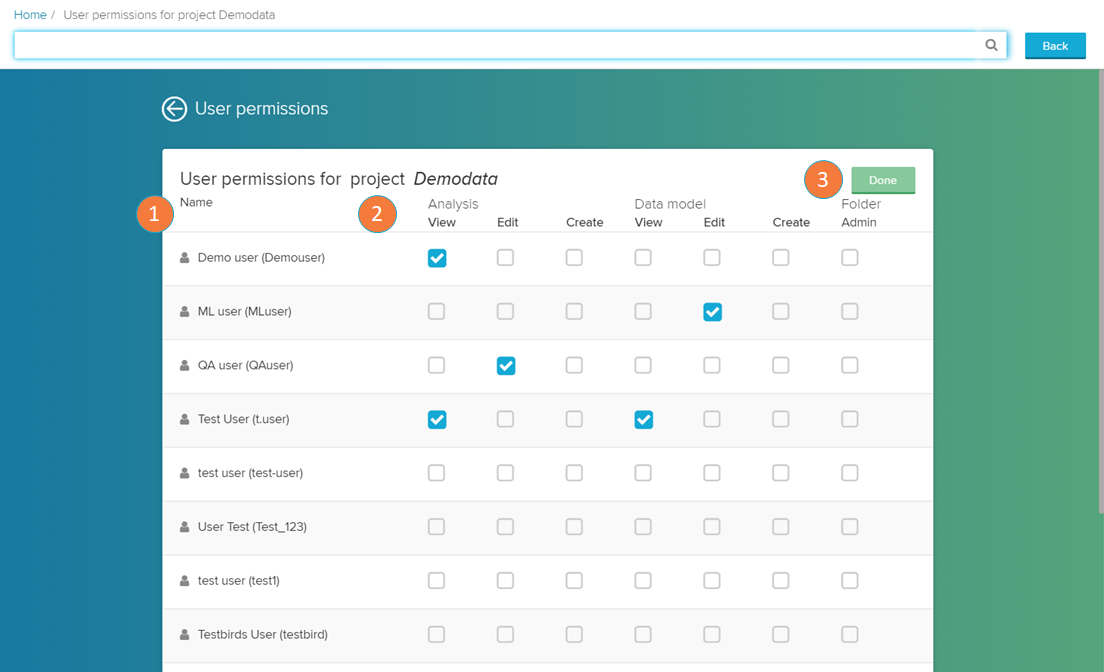Content permissions are used to restrict the access of users (or user groups) to any project objects (analysis documents, datamodels, folders).
Types of permission rights
Celonis comes with three different types of user rights.
| View | This is the "lowest" access right in the hierarchy. Users or groups with a View permission can access the object, but can't make any permanent changes to them. |
| Edit | Users or groups with an Edit right are granted permissions to edit this object. For analysis documents, they can access the Edit Mode (view more in Publish and edit). |
| Create | Create permissions allow the user or the group to add such new objects or folders (for example, Create an analysis). |
When selecting the Folder object, you may change the 'View', 'Edit', and 'Create' permission of all objects contained inside that folder.
When selecting Datamodel or Analysis objects, you may change the 'View' and 'Edit' permission only of that specific object.
Permission Inheritance
Please note, that permissions are always downwards inherited.
Let's examine a folder for an example:
Folder X consists of two analysis, one data model, and two subfolders Y and Z, each of them including again independent analysis and data models. If user A is granted Edit permissions on analysis for folder X, he is automatically granted Edit permissions for the two analysis in folder X, as well for all analysis that are included in the subfolders (Y and Z). (This also applies for View and Create rights).
However, you can override the inheritance by manually editing the permissions for the subfolders.
Navigation
Permissions for any objects are configured using the overview bar on the right side of your home-screen.
After selecting the desired object in the project browser (in this case, the folder 'Demo SAP'), you will see the options of editing permission in the overview bar.
- User Permissions: add or change permissions of users (see 'User / Group permission' section below).
- Group Permissions: add or change permissions of user groups (see 'User / Group permission' section below).
User / Group permissions
The User permission screen displays all users that currently have permission rights over the object you have selected. Check you current user base in the User Profile section.
- Add user: give a new user permission over your object.
- User list: name of the users who have been assigned permission rights for the object.
- Analysis view: gives View rights on the analysis.
(in this case, since the object is a folder, for all analysis in this folder and its subfolders). - Analysis edit: gives Edit rights on the analysis.
(in this case, since the object is a folder, for all analysis in this folder and its subfolders). - Analysis create: gives Create rights on the analysis.
(in this case, since the object is a folder, for all analysis in this folder and its subfolders). - Data model view: gives View rights on the data model.
(in this case, since the object is a folder, for all analysis in this folder and its subfolders).Note: When granting a user 'View' permissions to a data model, the user can see the data model in the project folder. However, the user can not view the data model configuration (e.g. tables, joins).
- Data model edit: gives Edit rights on the data model.
(in this case, since the object is a folder, for all analysis in this folder and its subfolders). - Data model create: gives Create rights on the data model.
(in this case, since the object is a folder, for all analysis in this folder and its subfolders). - Folder admin: the folder admin rights is available only for folder and project objects. It grants all permission rights (view, edit, and create) for all objects in that folder and its subfolders. It also grants access the Toolbar of the folder and therefore to edit, copy/cut/paste and delete the folder.
- Search bar: search for users according to their name, username, or email.
Analogously, the Group permission screen displays all groups that currently have permission rights over the object you have selected. The elements of the page are the same as the User permission screen, but adapted for groups. Check you current groups in the Groups section.
Add new user / group permission
You are able to assign new users rights to a object by clicking on the 'Add user' button on the 'User permissions' screen (see item 1 of the previous section). The same is analogously done for groups by clicking on the 'Add group' button on the 'Group permissions' screen.
- User list: name of the users who have been assigned permission rights for the object.
- Permission rights: assign here the permission rights to your user or group (see items 3-9 of the 'User / Group permissions' section).
- Done: click here to confirm.


